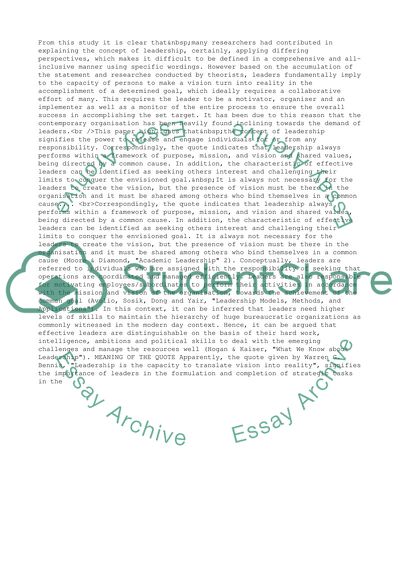Cite this document
(“Leadership Is the Capacity to Translate Vision into Reality Essay”, n.d.)
Leadership Is the Capacity to Translate Vision into Reality Essay. Retrieved from https://studentshare.org/management/1496317-leadership-quote
Leadership Is the Capacity to Translate Vision into Reality Essay. Retrieved from https://studentshare.org/management/1496317-leadership-quote
(Leadership Is the Capacity to Translate Vision into Reality Essay)
Leadership Is the Capacity to Translate Vision into Reality Essay. https://studentshare.org/management/1496317-leadership-quote.
Leadership Is the Capacity to Translate Vision into Reality Essay. https://studentshare.org/management/1496317-leadership-quote.
“Leadership Is the Capacity to Translate Vision into Reality Essay”, n.d. https://studentshare.org/management/1496317-leadership-quote.


